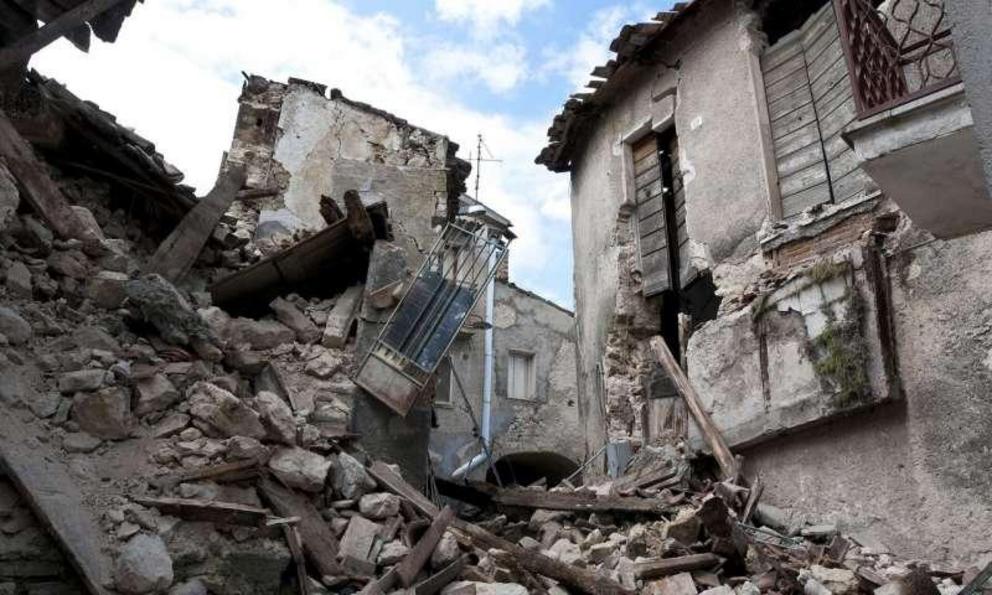Seismic biomarkers in Japan Trench fault zone reveal history of large earthquakes
Source:
University of California - Santa Cruz
Summary:
Researchers used a novel technique to study the faults in the Japan Trench, the subduction zone where the magnitude 9.1 Tohoku-Oki earthquake struck in 2011. Their findings reveal a long history of large earthquakes in this fault zone, where they found multiple faults with evidence of more than 10 meters of slip during large earthquakes.
FULL STORY
In the aftermath of the devastating Tohoku-Oki earthquake that struck off the coast of Japan in March 2011, seismologists were stunned by the unprecedented 50 meters of shallow displacement along the fault, which ruptured all the way to the surface of the seafloor. This extreme slip at shallow depths exacerbated the massive tsunami that, together with the magnitude 9.1 earthquake, caused extensive damage and loss of life in Japan.
In a new study, published January 27 in Nature Communications, researchers used a novel technique to study the faults in the Japan Trench, the subduction zone where the Tohoku-Oki earthquake struck. Their findings reveal a long history of large earthquakes in this fault zone, where they found multiple faults with evidence of more than 10 meters of slip during large earthquakes.
"We found evidence of many large earthquakes that have ruptured to the seafloor and could have generated tsunamis like the one that struck in 2011," said coauthor Pratigya Polissar, associate professor of ocean sciences at UC Santa Cruz.
Japanese researchers looking at onshore sediment deposits have found evidence of at least three similar tsunamis having occurred in this region at roughly 1,000-year intervals. The new study suggests there have been even more large earthquakes on this fault zone than those that left behind onshore evidence of big tsunamis, said coauthor Heather Savage, associate professor of Earth and planetary sciences at UC Santa Cruz.
Savage and Polissar have developed a technique for assessing the history of earthquake slip on a fault by analyzing organic molecules trapped in sedimentary rocks. Originally synthesized by marine algae and other organisms, these "biomarkers" are altered or destroyed by heat, including the frictional heating that occurs when a fault slips during an earthquake. Through extensive laboratory testing over the past decade, Savage and Polissar have developed methods for quantifying the thermal evolution of these biomarkers and using them to reconstruct the temperature history of a fault.
The Japan Trench Fast Drilling Project (JFAST) drilled into the fault zone in 2012, extracting cores and installing a temperature observatory. UCSC seismologist Emily Brodsky helped organize JFAST, which yielded the first direct measurement of the frictional heat produced by the fault slip during an earthquake (see earlier story). This heat dissipates after the earthquake, however, so the signal is small and transient.
"The biomarkers give us a way to detect permanent changes in the rock that preserve a record of heating on the fault," Savage said.
For the new study, the researchers examined the JFAST cores, which extended through the fault zone into the subducting plate below. "It's a complex fault zone, and there were a lot of faults throughout the core. We were able to say which faults had evidence of large earthquakes in the past," Savage said.
One of their goals was to understand whether some rock types in the fault zone were more prone to large slip in an earthquake than other rocks. The cores passed through layers of mudstones and clays with different frictional strengths. But the biomarker analysis showed evidence of large seismic slip on faults in all the different rock types. The researchers concluded that differences in frictional properties do not necessarily determine the likelihood of large shallow slip or seismic hazard.
Savage and Polissar began working on the biomarker technique as postdoctoral researchers at UC Santa Cruz, publishing their first paper on it with Brodsky in 2011. They continued developing it as researchers at the Lamont-Doherty Earth Observatory of Columbia University, before returning to UC Santa Cruz as faculty members in 2019. Hannah Rabinowitz, the first author of the new paper, worked with them as a graduate student at Columbia and is now at the U.S. Department of Energy.
"We've tested this technique in different rocks with different ages and heating histories, and we can now say yes, there was an earthquake on this fault, and we can tell if there was a large one or many small ones," Savage said. "We can now take this technique to other faults to learn more about their histories."
In addition to Rabinowitz, Savage, and Polissar, the coauthors of the paper include Christie Rowe and James Kirkpatrick at McGill University. This work was funded by the National Science Foundation. The JFAST project was sponsored by the International Ocean Drilling Program (IODP).
Journal Reference:
- Hannah S. Rabinowitz, Heather M. Savage, Pratigya J. Polissar, Christie D. Rowe, James D. Kirkpatrick. Earthquake slip surfaces identified by biomarker thermal maturity within the 2011 Tohoku-Oki earthquake fault zone. Nature Communications, 2020; 11 (1) DOI: 10.1038/s41467-020-14447-1

